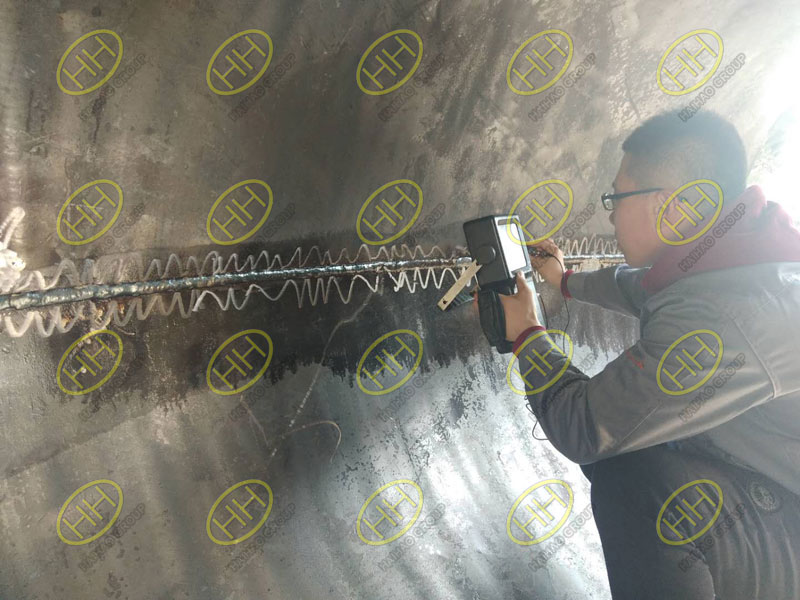Ultrasonic testing is an nondestructive testing(NDT) technology for detecting test piece discontinuities which may not be visible to the human eye.These defects can include cracks,corrosion,inclusions,porosity outside of specified tolerances, and voids.Ultrasonic testing devices pass ultrasonic sound waves into the test piece and measure the waves that reflect back to the device.The profile of the reflection is interpreted by software and the human operator to determine if the test piece is within spec.The procedures for ultrasonic nondestructive testing as follows:

Ultrasonic nondestructive testing for large diameter 90 degree elbow welds
1.Preparation before testing
- 1.Familiar with the workpiece (the workpiece name, material, specification, groove form, welding method, heat treatment state, workpiece surface state, inspection standard, qualification level, detection ratio, etc.);
- 2.Select instruments and probes (determine the flaw detector, probe, test block, scan ratio, detection sensitivity, detection method according to the standard regulations and site conditions)
- 3.Calibration of the instrument (the horizontal and vertical linearity of the instrument is measured at the beginning of the instrument.)
- 4.Probe calibration (for leading edge, refraction angle, main beam deviation, sensitivity margin and resolution calibration).
- 5.Instrument adjustment (the time base scale can be scaled to represent the horizontal distance, depth or sound path of the pulse echo.)
- 6.Sensitivity adjustment (check the sensitivity on the comparison test block or other equivalent test block.)
2.detection operation
- 1.Inspection of the base metal: The thickness of the pipe wall should be measured before the test, at least every 90 °, for reference during inspection. Adjusting the secondary bottom wave of the defect-free area to the full scale of the fluorescent screen as the detection sensitivity;
- 2.Inspection of welded joints: The scanning sensitivity should not be lower than the sensitivity of the evaluation line (EL line). The scanning speed of the probe should not exceed 150mm/s. The interval between two adjacent probe movements during scanning should be at least 10%. overlapping.
3.Inspection results and ratings: According to the nature, extent and length of the defects, they are rated according to relevant standards.
4.Check and recheck the equipment.
5.Issue a test report.
Note: For welded joints with excessive defects, the repaired parts and the affected areas during rework should be re-examined according to the original inspection conditions.







